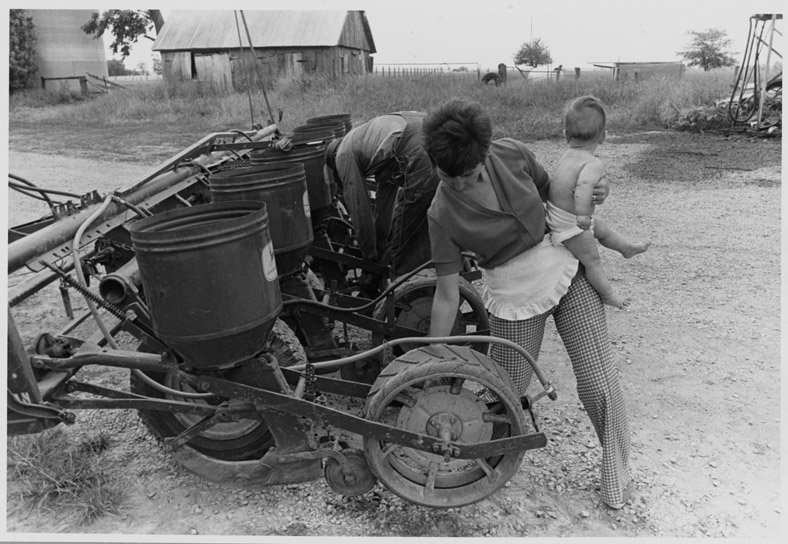
The Way We Worked
Winter 2005, Vol. 37, No. 4
By Bruce I. Bustard
"Who made America,
Whose sweat and blood, whose faith and pain,
Whose hand at the foundry, whose plow in the rain
Must bring back our mighty dream again."
—Langston Hughes, "Let America Be America Again," 1938
Imagine working in a coal mine. Or in a steel mill. Or at a telephone switchboard. Work and workplaces have gone through enormous transformations between the mid-19th and the late 20th century. "The Way We Worked," a new photography exhibit that opened on December 16, 2005, at the National Archives in Washington, D.C., offers a lens for viewing these changes through photography held by the National Archives.
National Archives photographs document work clothing, locales, working conditions, and workplace conflict. They also document a workforce whose distinctiveness was shaped by many factors—immigration and ethnicity, slavery and racial segregation, wage labor and technology, gender roles and class—as well by the American ideals of freedom and equality. Most importantly, these images honor those who built this country—the working men and women of America. "The Way We Worked" includes 86 exceptional black-and-white and color photographs from National Archives holdings spanning the years 1857–1987. The exhibition explores five themes:
Where We Worked - Americans have worked just about everywhere: on farms, boats, and skyscrapers; in mines, offices, and factories; and at home, restaurants, and hospitals. Photographs in this section include miners coming out of the Comstock Mine in Virginia City, Nevada, in 1867; Hawaiian cowboys ready to ride the range in Waimea, Hawaii, in 1899, and Pullman Porters working in a railroad lounge car in 1945.
How We Worked - Photographs show workers posing heroically with their tools and as the symbolic "heart of the turbine." They also reveal the effect of technology and automation as operatives sit along a radio assembly line, labor in typing pools, or work in a post office sorting room trying to block out the sounds of machinery around them.
What We Wore to Work - Work clothes have many functions. They serve as badges of authority and status, make occupations immediately identifiable, and sometimes distinguish male and female roles. Images in "The Way We Worked" show police officers, nurses, soldiers, secretaries, and fast-food employees wearing the clothing associated with their jobs.
Dangerous and Unhealthy Work - Photography has often documented "the dangerous trades" in the United States. Social reformers have used photographs as evidence to ban child labor, reduce the hours that women could work, and expose unsanitary workplaces. Engineers have photographed the details of machinery and processes to improve operations and practices. "The Way We Worked" documents unsafe conditions such as pesticide and radiation exposure and depicts dangerous jobs such as bridge painting and fire fighting.
Conflict at Work - Workers and managers have clashed over wages, hours of work, working conditions, work rules, and union recognition. Photographs of strikes and picket lines as well as other methods of settling labor problems depict the ways Americans have tried to give workers a voice.
In addition to displaying photographs, "The Way We Worked" provides an opportunity to hear workers talk about their experiences on the job. As they walk around the gallery, visitors hear excerpts from interviews with workers who describe what it was like to be a glove maker in the 1890s, a packinghouse worker in the 1930s, or a coal miner in the early 20th century. A video showing a variety of workplaces and a selection of work songs completes the environmental experience.
"The Way We Worked" will be on display through May 29, 2006, in the Lawrence F. O'Brien Gallery and is free and open to the public. The National Archives is located on the National Mall on Constitution Avenue at Ninth Street, NW, Washington, D.C.
